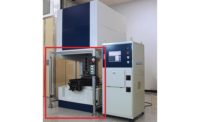The first half of 2020 found manufacturers having to pivot in the face of unprecedented challenges. Many had to halt production or, at the very least, slow production due to decreased demand and onsite worker limits. Even as operations ramped back up, manufacturing processes and procedures remain changed.
The new protocols in place may have exposed process shortcomings that manufacturers hadn’t realized existed. They also shined a light on areas that could become more problematic, like worker attendance and onsite availability, which automation tools could help offset.
Whether the future holds another global health crisis or a local natural disaster, manufacturers must take the opportunity now to bolster their quality systems to ensure streamlined production and efficient operations—no matter what.
Why Now’s the Time to Consider Automation
Prior to this year, manufacturers considered automated metrology as a way to be more efficient and cost-effective when approaching manufacturing quality. With the events of 2020, however, many now also see it as a way to rely less on manpower for inspection measurement while still maintaining productivity. Skilled labor was already difficult to find. Now, with current work restrictions and safety measures, manufacturers must lean on automation to better utilize current workforce resources.
For instance, what if the one person on staff trained to manage all quality systems and inspections has taken an unexpected leave? Or that person is simply unavailable due to quarantine rules or travel restrictions? Many manufacturers recently faced situations like these and found themselves scrambling to find supplemental assistance.
But why hadn’t more manufacturers invested in a more diverse production strategy up to this point? For many, it was a lack of time, money or resources, resulting in the continued application of single-source procurement for critical measurement functions and manufacturing capabilities.
In recent years, though, some modern manufacturing shops had already begun embracing diversification of quality by putting the operator or tender of the process in charge of all quality control aspects for a particular operation. This makes them accountable for the production and scrap rates for their part of the process. It also makes the process more efficient and nimbler by affording the ability to quickly react to changes and take swift, immediate corrective action if necessary.
In many cases, there is even diversification within the diversification. For example, take the case of a machining center with on-machine probing that is doing initial checks of incoming materials, and then compensating based on the initial feedback from that system. Once the part is cut, it then goes on to a CMM or gaging station where it is again verified for quality. That system can then, in turn, provide feedback around compensation information for corrective action decision making. And, all of this can be automated, taking the need for most human interaction almost completely out of the equation and setting the machining center up to better react to an array of unexpected challenges.

Pictured here are contact and non-contact sensors for custom application solutions. The sensors are shown in applications commonly requested by customers.
Extending the Benefits of Automation
For manufacturers that had implemented automated metrology tools and processes over the past few years, they likely realized a number of measurement process benefits:
- Greater probability of products being designed to tolerance limits
- Ability to set control limits to make automatic adjustments in real time
- Reduced instance of operator-caused errors
- Improved repeatability of inspection
- processes
- Faster remedy of deviations
- Greater existing resource efficiency
For those manufacturers looking to now do the same—automate measurement processes—it’s good to keep in mind that, with both automation and human-tended systems, the integrity of the data gathered is the most critical aspect. With automation and diversification, you have redundant systems that allow data comparison, helping ensure the data being received can contribute to higher-quality decision making.
And though there will always be some variations between processes, you are able to build a baseline that allows for simpler identification of issues as they arise within the process. In addition, many of the new connectivity tools being offered by most system OEMs use standard protocols that let users monitor both the status and performance of a manufacturing cell, including all the individual systems that go into it. With these measurement systems imbedded in the process, manufacturers can fully close the loop of process control and monitoring. In the end, this helps manufacturers maintain quality production while utilizing fewer resources.
And, the good news is that manufacturers typically don’t have to wait long to see automation ROI, with many achieving it as soon as the process is released to production. But it is important to note that integrating metrology equipment into a manufacturing process isn’t a “one size fits all” approach. While some measurement applications can be applied to others, not all can be easily replicated, if at all. So, manufacturers will want to thoroughly research the technology and lay out a step-by-step implementation process ahead of time—especially in this time of restricted workforces, when training on a new system can be an even bigger challenge than it would normally be.

This is an inline non-contact vision system with custom rotary capability. This system provides non-contact inspection of critical features with this “light out” manufacturing cell. The results were used for defect segregation and machining center feedback compensation, for a full closed loop manufacturing system.
Give Yourself an “Automatic” Advantage
Manufacturing organizations that weren’t on track to adopt automated metrology in the next decade were already positioning themselves to be at a competitive disadvantage. Now, the stakes are even higher. Retaining talent is tougher, operating at full capacity isn’t always possible, and maintaining productivity is more important than ever.
There is no predicting the future. But manufacturers can look at the current state of affairs as an opportunity to re-evaluate processes, recognize gaps and identify areas of improvement that can fortify operations against continuing hardships. Automation is one of those improvements. Q






